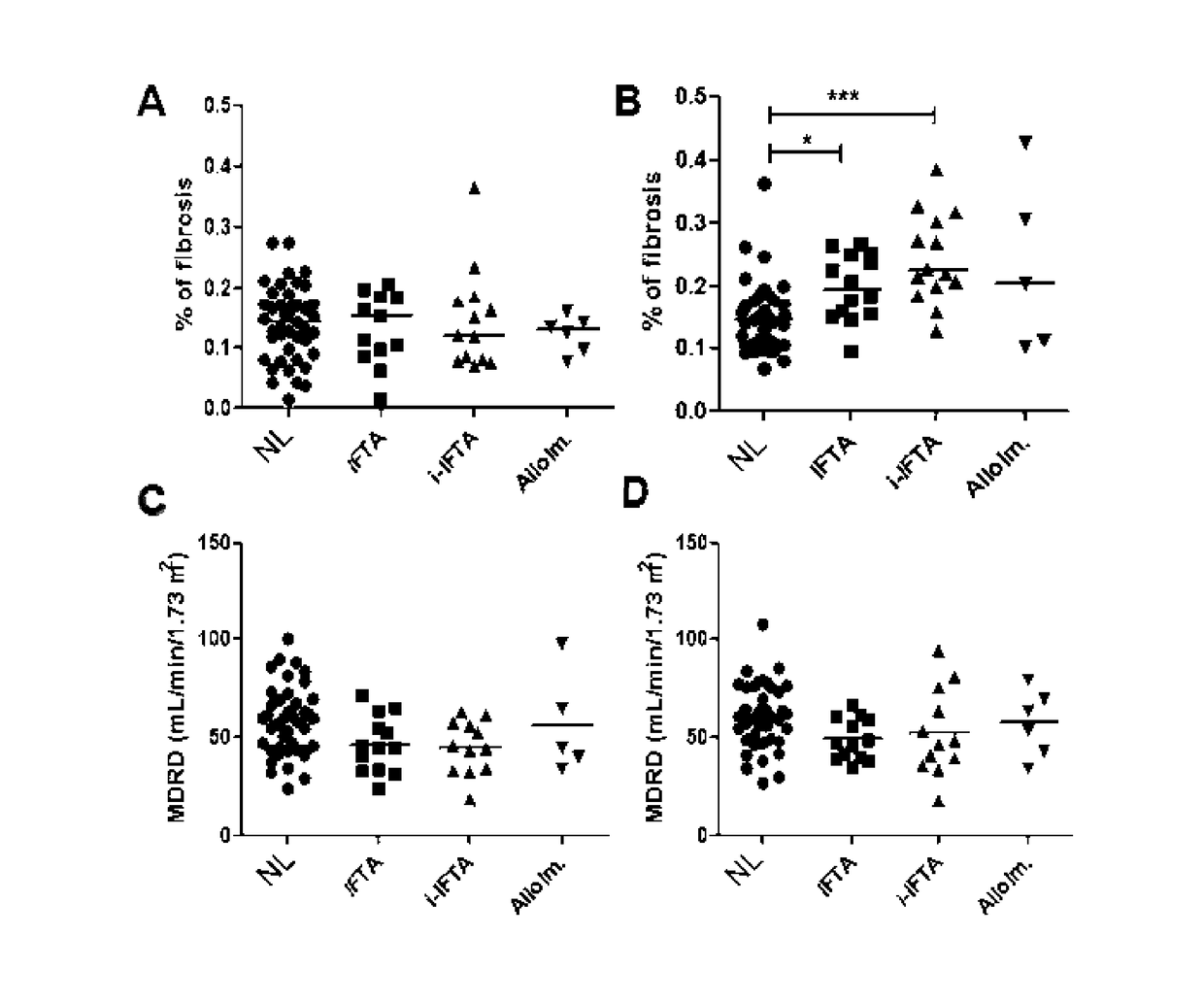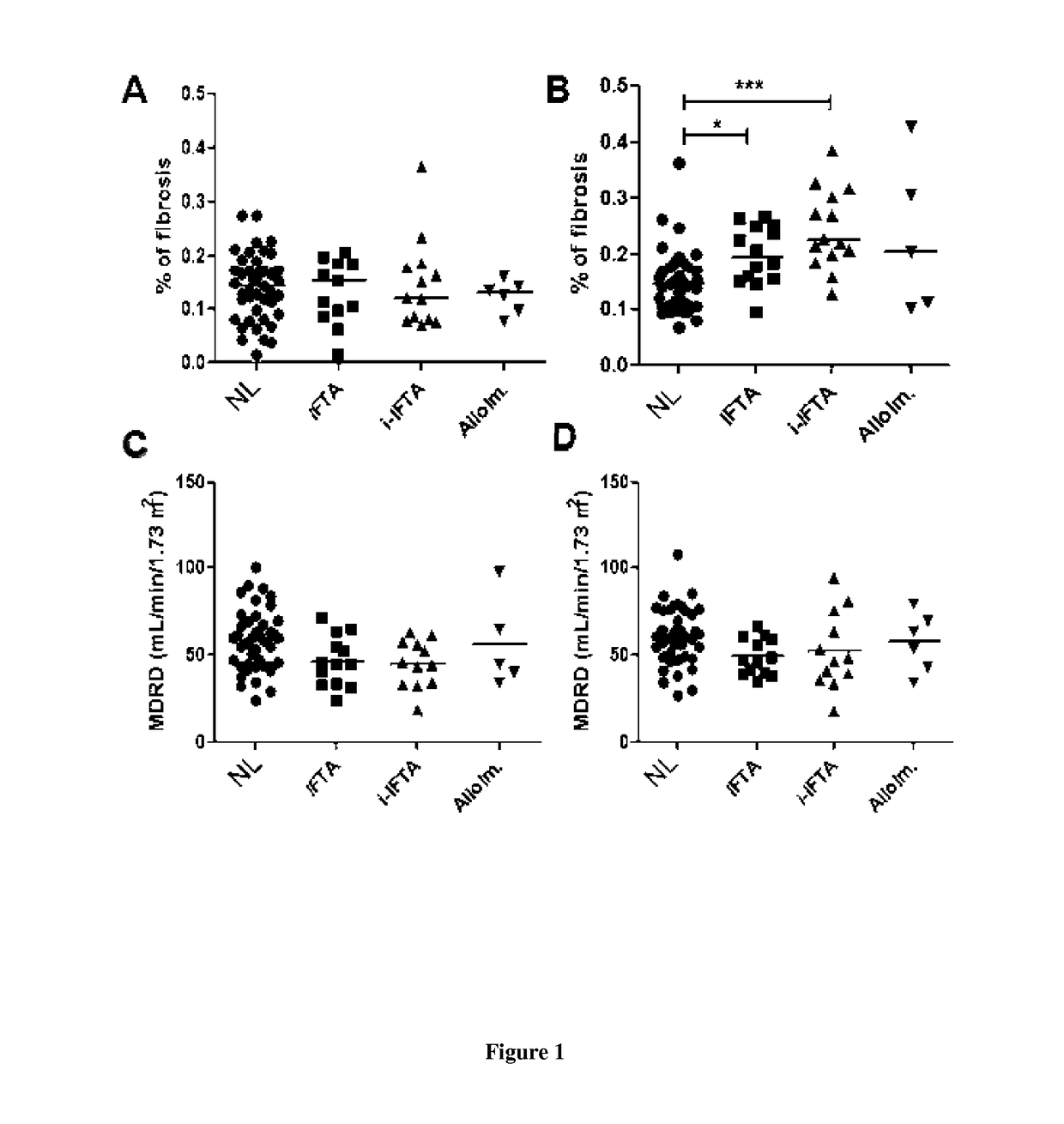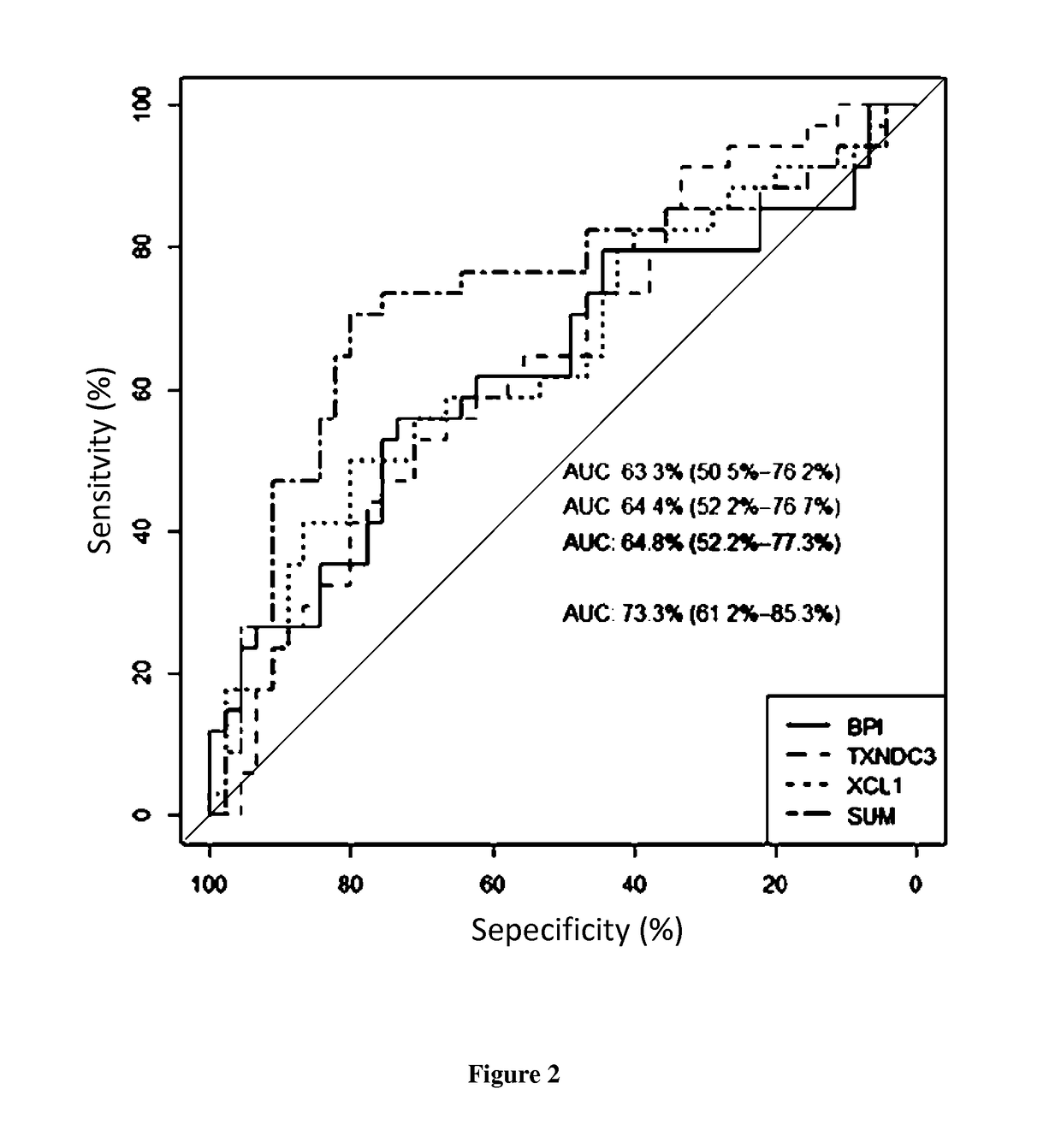Methods for predicting graft alterations
a technology of graft alterations and methods, applied in the field of medicine, can solve the problems of invasive biopsy, significant variability in interpretation of histological analyses, complications and sampling errors,
- Summary
- Abstract
- Description
- Claims
- Application Information
AI Technical Summary
Benefits of technology
Problems solved by technology
Method used
Image
Examples
Embodiment Construction
[0011]The invention addresses these needs, as it relates to methods useful in the early prediction of development and progression of graft alterations.
[0012]The inventors indeed analyzed the gene profile and cell phenotype of a prospective cohort of 79 first renal recipients separated in 4 groups according to the one year surveillance biopsy: without lesion (Normal histology; NL); isolated IFTA; IFTA with isolated inflammatory infiltrate within the scarred compartment only (i-atr>0)(i-IFTA); and features of alloimmune injury (ALLO). By a study carrying out gene expression microarrays and cell phenotype performed on blood mononuclear cells at 3 months post-transplantation for these 79 renal transplant patients, the inventors demonstrated that blood gene expression can discriminate patients with 1-year normal biopsy through an association of only 3 genes with an area under a ROC curve of 0.76 after bootstrap resampling validation.
[0013]The present results suggest that blood gene expre...
PUM
| Property | Measurement | Unit |
|---|---|---|
| Level | aaaaa | aaaaa |
Abstract
Description
Claims
Application Information
 Login to View More
Login to View More - R&D
- Intellectual Property
- Life Sciences
- Materials
- Tech Scout
- Unparalleled Data Quality
- Higher Quality Content
- 60% Fewer Hallucinations
Browse by: Latest US Patents, China's latest patents, Technical Efficacy Thesaurus, Application Domain, Technology Topic, Popular Technical Reports.
© 2025 PatSnap. All rights reserved.Legal|Privacy policy|Modern Slavery Act Transparency Statement|Sitemap|About US| Contact US: help@patsnap.com



